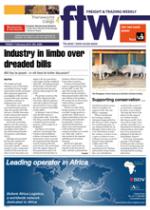Although a legal maximum
level for brine content
in chickens is in place
it appears that the local
chicken meat producers are
not all necessarily sticking
by this rule, according to
David Wolpert, CEO of
the Association of Meat
Importers and Exporters
(Amie).
“Brine-based mixtures
(salt, water, phosphates,
f lavourants, etc) are
injected into poultry meat
for quality purposes – to
enhance f lavour, taste,
tenderness, juiciness,”
according to the
Department of Agriculture,
Forestry, and Fisheries
(Daff)
“There is an optimum
amount that is necessary
for quality enhancement.
Daff regulations currently
prescribe a maximum 8%
water pickup for whole
carcasses only – but in
practice more is injected,
sometimes 30% to 60%
in individual quick frozen
(IQF) portions.
As the consumer is
paying for this injection
as if it were chicken, the
Daff identified this abuse
as a threat to consumer
safety and value for money
and, as a result, contracted
the Agricultural Research
Council (ARC) to conduct
a research study on brine
injection of chicken meat.
“Results,” said the Daff
report, “clearly indicated
that brine injection of
IQF chicken portions as
practised in SA resulted
in excessive moisture loss
during defrosting and
cooking of such meat.
“The practice also
resulted in nutrient
dilution as demonstrated
by the lower protein and
energy content of the four
commercially available IQF
portions tested, compared
to control portions known
not to be injected with
brine. The average was
6.87% protein dilution
and 211.65% energy level
dilution. Brine injection
resulted in elevated salt
levels (average 0.37%
higher) in IQF portions.
“This
resulted in
very high
sodium levels
that might
have posed a
health risk for
consumers.
A probable
solution would
be that IQF
portions must
be labelled
as products
containing added salt and
sodium.”
And, indeed, this was
legislated by the Daff.
In order to tighten
up the rules on possibly
non-compliant chicken
producers, the Daff has
given the poultry industry
a year to adjust its brine
levels to a maximum of 15%
in IQF chicken portions.
The department will
also perform regular tests
on brine levels to ensure
compliance with the new
limit.
According to the Daff
spokesman, Steve Galane,
brine regulations have
always been in place, but
they have not been properly
monitored.
And, he added, the
issue was tackled after
concerns were raised about
high thaw and cooking
losses, leading to fears
that some producers were
injecting meat with brine
levels above 30%.
“The department was
consequently requested to
address
the issue
as soon as
possible,”
he said.
Wolpert
applauded
the Daff
for having
submitted
notice of
the new
brining
levels to
SA’s international trading
partners by an official
notice to the World Trade
Organisation (WTO).
Also, he said: “We urge
Daff not to bow to the
pressure being exerted
by certain local poultry
producers whose aim is to
have the new limits raised
(to 25%)."
INSERT
The Daff has given
the poultry industry
a year to adjust its
brine levels to a
maximum of 15%.

